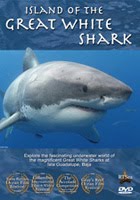 Cruising throughout the warmer waters of the Pacific, the Pacific Blue Marlin is one of the most magnificent of the top or "apex" predators to roam the seas. But as with many other pelagic sea creatures, not much is known about them. A majestic mystery.
Cruising throughout the warmer waters of the Pacific, the Pacific Blue Marlin is one of the most magnificent of the top or "apex" predators to roam the seas. But as with many other pelagic sea creatures, not much is known about them. A majestic mystery.But that is slowly changing through the help of a seemingly unlikely source: sportfishermen. The Pacific blue marlin is a highly prized catch in ocean sportfishing; landing such a fish can entail hours upon hours of strenuous effort, making it one of the pinnacle goals of the sport. But rather than lose the fish to a trophy photo or dinner plate, the marlins are being released after being tagged with satellite tracking tags.
Stanford University's Hopkins Marine Station, home to the Global Tagging of Pelagic Predators (GTOPP) program, has been working for nearly a decade on tagging a variety of ocean predators, ranging from billfish - like the marlin - to tuna, great white sharks, and more. Headed by Dr. Barbara Block, GTOPP has uncovered migratory patterns that were heretofore unknown, such as the migratory patterns of white sharks traveling from the California and Baja coasts to a large area in the Pacific, dubbed the White Shark Cafe, and then back to their respective coasts year after year.
Working with sportfishing tournament organizations, such as the Hawaiian International Billfish Tournament, GTOPP has promoted catch-and-release techniques that allow the researchers to tag the animals with electronic tags that can record a variety of information including global position, speed, and depth. Ultimately, the tags come free and upon reaching the surface, release their stored data to satellites for study by an anxious and waiting team of researchers.
GTOPP researchers just recently completed launching a series of ten tags on Pacific blue marlin caught as part of the Hawaii's big marlin tournament; an event called the Great Marlin Race due to the long distances that the marlin can cover. They are waiting to see what new surprises the tagged animals will reveal as they patrol the open sea.
In 2009, several tagged marlin traveled a distance of more than 1800 miles, from Hawaii to the Marquesas Islands. In addition to such a long distance, what made this remarkable to the researchers was the fact that the animals crossed the equatorial region, which is unusual due to its warmer surface temperatures and lower oxygen content - not a normally hospitable environment for a high energy-consuming animal like a marlin.
"The equatorial region is such a significant boundary for so many species, it was really surprising to see that three long tracks went right across it," said Randy Kochevar, Hopkins Marine Station marine biologist. "We don't really know a lot about the marlins' patterns and their behavior. It appears that rather than traveling to a particular place to spawn, and then spending the rest of the year feeding, like tuna, it seems like they are constantly spawning and they sort of come and go from place to place."
 So, while some tagged predators have defined certain migratory routes or oceanic highways, like the white sharks traveling from the coasts to mid-Pacific, other animals appear to roam the seas, perhaps directed by yet undiscovered stimuli. Enlisting the aid of sportfishermen in events like the Great Marlin Race, can be an effective means to learn more about these important ocean predators while allowing the fishermen to engage in the most challenging aspect of their sport - and at the same time preserving the species rather than see it hanging tails-up from a local dock.
So, while some tagged predators have defined certain migratory routes or oceanic highways, like the white sharks traveling from the coasts to mid-Pacific, other animals appear to roam the seas, perhaps directed by yet undiscovered stimuli. Enlisting the aid of sportfishermen in events like the Great Marlin Race, can be an effective means to learn more about these important ocean predators while allowing the fishermen to engage in the most challenging aspect of their sport - and at the same time preserving the species rather than see it hanging tails-up from a local dock.The Shark Free Marinas Initiative is another organization that encourages catch-and-release techniques for sportfishermen, politically avoiding a more confrontational approach (banning sportfishing altogether) by taking an incremental step toward shark protection and confrontation. While some people may debate the hooking and reeling in of sharks or marlins as unnecessarily cruel, it has proven itself to be one of the more effective methods for enabling scientists to tag and track these animals.
"What we hope to learn from this work," says Stanford marine biologist George Shillinger, "is basic information about these animals' life histories. We want to know where they go to feed and where they go to breed. We want to understand how they use the ocean in which they live and, ultimately, how we can manage their populations to ensure that they remain plentiful."
Read more about GTOPP and the Great Marlin Race at their website.
Read more about marlin tracking and see a brief video through Stanford's Hopkins Marine Station.

















No comments:
Post a Comment